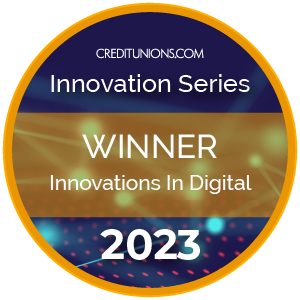Modularity and Openness
Adding Capabilities to Grow and Scale
Modularity and openness are key, and only effective if you have a boundless business mindset A business model and a set of technology solutions to innovate and grow
Modularity, openness, interoperability: these elements are crucial nowadays, and maybe taken for granted, especially when talking about how technology platforms can really support businesses since these elements are changing faster and faster. These elements are something one should embed within the design principles of any IT ecosystem today, similar to a solid base of LEGO bricks which hook seamlessly to other components of your ecosystem.
Is this enough, though? A common mistake many businesses make is focusing only on the technological integration of the systems, while leaving aside what really matters and is necessary to keep in the fore-front: business data integration, concepts and business processes within a unique ecosystem so that one can govern and monitor the organization in a holistic way. To do so, it’s necessary to have a business partner, not just technology.
Many systems, many processes, many databases: they can create a life of their own...
The “Frankenstein effect” – or the proliferation of multiple divergent silos within a single organization and outside the organization – is generating confusion, lack of direction, increased complexities, management difficulties and a general decrease in the overall performance of the entire company, not to mention the risks connected to having critical and business sensitive data spread in multiple systems. Also, ensuring constant business continuity is more difficult when there is a coexistence of multiple systems and multiple business continuity processes and plans. In the end, this chain is only as strong as its weakest link…
The third-party redundancy: an open discussion
The market and the regulators have been deeply discussing the risks associated by partnering with third-parties. Some time ago, the NCUA took a step forward by asking Congress to give the Association the power to manage this concern in a more restrictive way , recognizing the increase of multiple vendors’ affiliation could result in a variety of threats, including systemic risk from the highly interconnectedness of the industry itself.
Nevertheless, the topic is still in the eye of the storm, and in a recent statement NCUA Chairman Rodney Hood declared these threats may be something NCUA addresses further post-pandemic. This topic could add another level of responsibility to Credit Unions who are already struggling with the overall management and impact of this crisis due to complexities associated with vendor management and due diligence.
So, how do we fix the problem? Modular solution and third-party partners are essential for growth, enabling companies to integrate, innovate and respond much faster to shifts in technology and market conditions.
Setting the right mindset
Sometimes it’s much harder to understand what direction and decisions to make when we are consumed by the effects of these complex systems, that result in a deep fragmentation phenomenon. Not only from a technology perspective, but from a business model perspective too.
While regulators face this issue, what can be done to effectively address the Frankenstein effect? A good way to address this would be to assess the risks with cross-functional teams to ensure the actions taken are doing more good than harm, as well as assuring alignment with your company’s mission and offering sustainable business results. There are several risks to address when you have multiple intertwined systems and vendors:
Risk #1: An accountability issue and inability to achieve cooperation
The spread of systems and vendor relationships may result in a greater difficulty to assign clear responsibilities. Separate systems to manage operations decrease the ability to manage crisis efficiently and effectively, as the accordance between two (or more) companies agreeing to work together is not an easy task and can be taken for granted.
Risk #2: Interconnection and losing control
What if one of your systems is affected by a collateral outage due to another system failure? Interconnection can be threatening if the ability to orchestrate applications into a unique approach may not support the end-to-end processes.
Risk #3: Domino effect, greater cease
When managing multiple systems – and vendor relationships – it could be harder to coordinate crisis management. Eventual outages can occur because of multiple systems still having to synch and integrate, therefore making it more difficult to manage due to less clarity of the issue and a more complex to diagnose.
Risk 4: Inability to holistically view the business
Fragmentation in systems, processes and data management can result in scattered information. Lacking a centralized and common management approach can result in a lack of governance which holds back the organization’s capability to look at business phenomena with a unique point of view.
Over technology: a business model to overcome difficult times
When facing the risks connected to the Frankenstein effect, some competencies or approaches are better solutions than others.
In terms of overall management strategy, for example, the ability to create an ecosystem of trusted partners/vendors aligned in terms of vision, principles and a common strategical, financial ground built on the similar values to sustain future growth is important: it can be one of the key elements to avoid the highly technical phenomenon – such as M&A’s that are characterizing the Credit Unions’ industry during these times – and to ensure the ability to stay in the market for the long term.
Together with the element of a trusted ecosystem, a deep knowledge of industry trends can be important in correctly setting the evolutionary path of the organization, including the ability to design business models, and technology systems, which sustain growth. Also, this kind of mindset can bring mutual benefits to organizations that are willing to cooperate: a transparent partnership is more effective when existing on a common ground that embraces business strategy first, and technology second.
Unique, open, modular: VisiFI’s approach to sustain future-proof credit unions
VisiFI’s approach to sustain future-proof credit unions relies on the combination of three key elements:
- The ability to provide a holistic approach to the business, which is our role as a true partner for the credit unions; valuating why and how to best modify business approaches which maximize the overall performance of the organization and minimize the risks connected with the Frankenstein effect.
- The openness of a flexible ecosystem which ensures we can offer to the Credit Unions not only a viable technology platform but also a business mindset where cooperation and strategic direction is shared, from peer-to-peer.
- The modularity of a scalable system, through which we offer credit unions the ability to mix and match solutions according to each credit union’s priorities.
At VisiFI, we achieve this by combining business acumen, industry knowledge, technology savviness and the willingness to create a great ecosystem where mutual growth is a common ground on which we design our future, together.
We do more than speak your language.
Share this post:






